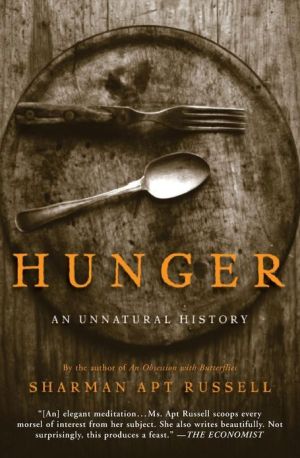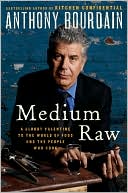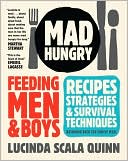Hunger: An Unnatural History
Hunger is both a natural and an unnatural human condition. Sharman Apt Russell explores the range of this primal experience
Search in google:
A subject as big as history and as everyday as skipping lunch-hunger and how it works-is explored in this thought-provoking, kaleidoscopic blend of science, anthropology, and personal reflection Publishers Weekly Russell's playful survey of the effects of hunger, which moves inexorably toward a wider moral meditation on starvation, suggests, "Hunger is a country we enter every day, like a commuter across a friendly border." Observing that "not eating seems to be innately religious," Russell (Anatomy of a Rose) explores the biochemical and cultural dimensions of hunger, from the stunts of "hunger artists" to the practices of fasting ascetics and so-called "miracle maids" (virginal women who appeared not to require food), touching on her own abortive experience of fasting. Turning to the history of political protest, Russell describes the force-feeding of British suffragettes and the strategic fasts of Mahatma Gandhi. She captures the limits of human cruelty and frailty in detailing the medical studies of starvation conducted in the Warsaw Ghetto; famine and cannibalism in the Ukraine and China; and the findings of the "Minnesota Experiment," which studied how semistarvation influences behavior. Addressing the stark facts of current world hunger, Russell reports on the medical challenges of reintroducing food to the chronically malnourished, on the iconic image of the starving child and on the efforts of humanitarian agencies to end world hunger. With its expert blend of scientific reportage, world history and moral commentary, Russell's work is informative and haunting. (Sept.) Copyright 2005 Reed Business Information.
1The Hunger Artists1We have always been hungryHunger artistsThe portrait of the artist as a hungry young manFamine and the gates of griefCalorie restriction and fasting for healthThe intimacy of hunger2Eighteen Hours17The process of digestionSignals of satietyOur "second brain"Ghrelin and leptinThe transformation of the worldAppetite and aversionSkipping breakfast3Thirty-Six Hours27Gender differences and short-term hungerOur savings bank of caloriesA shortage of glucoseObesity researchGenetic disorders of overeatingObesity and povertyPoverty and hunger4Seven Days37Seventy-two hours without foodThe liverThe magic of ketones, the miracle of ketosisFasting in religionFasting saints and miracle maidsA renaissance of Christian fastingMy fastThe seven-day fast, matching Heaven with Heaven5Thirty Days53Tanner's "starvation comedy"The first scientific study of a thirty-day fastA cure for obesityFasting for healthA therapeutic fasting centerCalorie restriction in monkeys and BiospheriansHormesis and intermittent fasting6The Hunger Strike73Hunger as theatreThe English suffragettes revive an old traditionMahatma GandhiTen Irish RepublicansMedical ethics in a hunger strike7The Hunger Disease Studies95The Warsaw GhettoAn ambitious research projectResults of the hunger disease studiesThe first general conference on hunger diseaseDeportations and liquidationThe fate of the scientists8The Minnesota Experiment113Hungry people and the end of World War IIThe use of conscientious objectors in the Minnesota ExperimentThe physical and psychological effects of semi-starvationUnexpected problems in refeedingConsequences of the experiment9The Anthropology of Hunger137Hunger frustration in the Siriono of Bolivia, Gurage of Ethiopia, and Kalauna of Papua New GuineaColin Turnbull and the African Ik, the dissolution of familyThree social responses to widespread hungerCannibalismThe largest recorded famine in historyHunger and child death in the cane workers of BrazilThe medicalization of hunger10Anorexia Nervosa157Anorexia mirabilis, anorexia nervosaThe involuntary effects of starvationSimilarities and differences between anorectics and the Minnesota Experiment volunteersAnorexia nervosa as adaptationMultiple theories11Hungry Children169The Dutch Hunger WinterStarvation and fetal developmentMarasmus and kwashiorkorThe debate over protein and micronutrientsNew ways to refeed malnourished childrenChildren as the icon of famineHow hunger affects cognition and growthHow to help a hungry child12Protocols of Famine187Baidoa, SomaliaNew ways to refeed malnourished adultsThe will to liveVonzula, LiberiaFamine and diseaseWau, SudanTriageHome-based care and therapeutic feeding centersReady-to-eat therapeutic foodPilot programs13An and To Hunger205Social causes of hungerEpiphanyThe United Nations Hunger Task Force and the eight Millennium Development GoalsThe facts of world hungerThree strategies to end world hunger14The Top of the Mountain215Hunger and Saint PatrickLegal and moral uses of fasting in early IrelandA walk up Croagh PatrickIrish historyAn Gorta Mor of 1845-50Ancient troscad and the power of hungerSelected References and Notes231Acknowledgements261
\ Publishers WeeklyRussell's playful survey of the effects of hunger, which moves inexorably toward a wider moral meditation on starvation, suggests, "Hunger is a country we enter every day, like a commuter across a friendly border." Observing that "not eating seems to be innately religious," Russell (Anatomy of a Rose) explores the biochemical and cultural dimensions of hunger, from the stunts of "hunger artists" to the practices of fasting ascetics and so-called "miracle maids" (virginal women who appeared not to require food), touching on her own abortive experience of fasting. Turning to the history of political protest, Russell describes the force-feeding of British suffragettes and the strategic fasts of Mahatma Gandhi. She captures the limits of human cruelty and frailty in detailing the medical studies of starvation conducted in the Warsaw Ghetto; famine and cannibalism in the Ukraine and China; and the findings of the "Minnesota Experiment," which studied how semistarvation influences behavior. Addressing the stark facts of current world hunger, Russell reports on the medical challenges of reintroducing food to the chronically malnourished, on the iconic image of the starving child and on the efforts of humanitarian agencies to end world hunger. With its expert blend of scientific reportage, world history and moral commentary, Russell's work is informative and haunting. (Sept.) Copyright 2005 Reed Business Information.\ \ \ \ \ KLIATT - Nola Theiss\ Hunger is a serious look at what the author calls "an unnatural history of hunger." Russell is a natural science writer who looks at her subject from all angles, from the weird—performers who made their living by fasting for an audience—to a physiological description of how our bodies react to hunger over time, starting with a skipped breakfast to 30-day fasts. She also looks at the political aspects of hunger, from self-imposed hunger fasts to hunger used as a weapon of war. She includes research done by doctors in the Warsaw Ghetto, who tried to give value to their suffering by studying the effects of hunger, and examines other historical times of hunger, including the Irish famine and the Dutch Hunger Winter. She writes about our well-publicized response to hunger in some countries and our ignorance of it in other situations and what we've learned to combat hunger. She looks at its psychological aspects, including anorexia nervosa and the effect of living in a society with almost too much food available when we know that others are starving. Her "Selected Notes and References" at the end are typical of the rest of the book: easily read, they are helpful in explaining some technical issues and get to the heart of each topic. Somehow Russell manages to be a scientist, historian, social commentator, and political scientist in a sensitive, non-preachy, but motivating way.\ \ \ Library JournalIn a country plagued with obesity problems, the notion of hunger elicits haunting images of the malnourished in parts of the Third World. Natural science writer Russell (Anatomy of a Rose) expands our understanding of starvation, examining its various manifestations. Fasting can be a fashionable choice for the dieter, while for the religious the denial of food is largely inspirational, and constant hunger caused by genetic disorders destroys the possibility of a normal life. Russell also looks into the primary causes of starvation afflicting too many large regions of the world, such as natural catastrophes, fickle weather, and political unrest. And she addresses the repercussions of hunger-according to one study, though the body can still function under reduced caloric intake, personality and emotional stability suffer damage. But food alone is not the panacea: as rescuers working with the famished are now discovering, special diets are necessary to repair abused digestive and metabolic systems. Russell's readable account is a provocative blend of science and anthropology, although her gut-wrenching tales of starvation are best read on an empty stomach. Suitable for public and academic libraries.-Rita Hoots, Sacramento City Coll., Davis, CA Copyright 2005 Reed Business Information.\ \ \ \ \ School Library JournalAdult/High School-A fascinating, multilayered analysis. Russell describes the physiological effects of hunger, starting with what occurs in the digestive system while the subject is watching a commercial for the Olive Garden restaurant and ending with the body's processing of the last bit of pasta and anchovy. Her discussion of the biological aspects is concise, interesting, and free from scientific jargon. After covering what happens when the body has food, Russell gives a sobering account of what occurs in the mind and body when food is withheld. Using fasting periods from 18 hours to 30 days, the author shows the extraordinary ways in which the deprived body tries to save itself. Her choices for the historical overview of hunger include hunger artists, religious and politically motivated fasting, therapeutic fasting, famines, experiments on starvation, anorexia, and efforts to combat world hunger. The short essays on the Warsaw Ghetto, the potato famine in Ireland, Colin Turnbull's studies of the Ik tribe, and the industrialization of China are so interesting and well written that they invite further research. This is an important topic for teens to explore. As Russell points out, one in 10 Americans lives in a food-insecure household. The lasting biological and psychological effects of hunger on children are critical.-Kathy Tewell, Chantilly Regional Library, Fairfax County, VA Copyright 2006 Reed Business Information.\ \ \ \ \ Kirkus ReviewsAn engrossing account of the myriad aspects of hunger, from its psychological and physical effects on the body to the spiritual, therapeutic and political motivations for fasting. Russell (Writing/ Western New Mexico University), author of The Anatomy of a Rose (2001) and other books on natural history, undertaken a period of fasting to learn firsthand what real hunger feels like. Hunger, she reports, is as big as history and as intimate as the self. Besides providing disturbing statistics on hunger and riveting accounts of famines, she explores the physiology of digestion and the mystery of anorexia nervosa, delves into the curious practice of competitive fasting and reports on the use of hunger strikes by Gandhi, English suffragettes and Irish Republicans. Perhaps the most fascinating sections of her book are her accounts of hunger studies. One amazing study was conducted by Jewish doctors trapped inside the Warsaw ghetto in World War II, when official Nazi policy was starvation of the Jews. The results of the project, which ended in 1943 when the inhabitants were liquidated and the ghetto razed, were smuggled out to aryan doctors, published in French in 1946 and remain today the most detailed portrait of extreme starvation. Another study conducted in 1944 and 1945 in Minnesota used conscientious objectors as medical guinea pigs, putting young men on a semi-starvation diet for six months and then refeeding them in order to determine the most effective and economical way to help starving populations at the war's end. Also noteworthy are descriptions of how hunger shapes human culture. Here, Russell turns to the work of anthropologist Colin Turnbull, who studied the starving Ik people ofUganda and Kenya in the 1960s and created a chilling portrait of human behavior under the stress of chronic hunger. Following her account of relief efforts around the globe, her penultimate chapter includes the recommendations of the U.N. Task ForceAgainst Hunger for reducing hunger in the world. While the subject is often somber, the presentation is one of verve and style-and the end-of-book notes provide a useful guide for readers whose interest has been piqued.\ \








